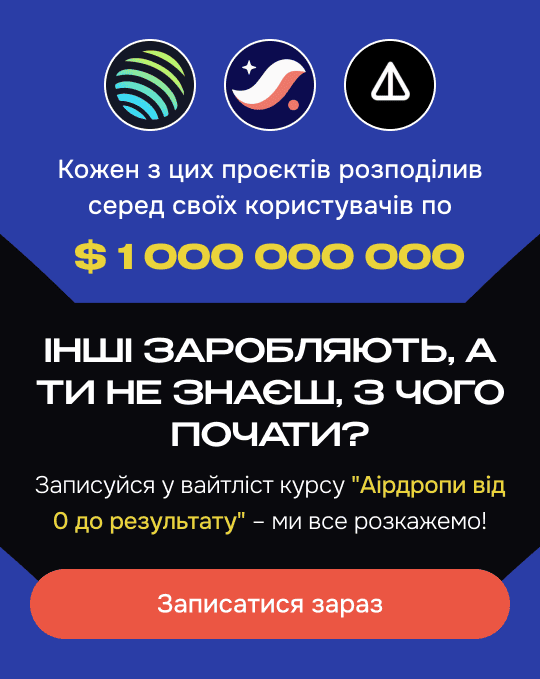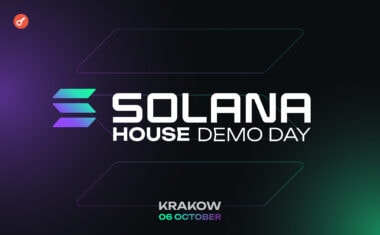How Much Have Incrypted Readers Earned From Airdrops? — Survey Results

This spring marked the 10th anniversary of the concept of airdrops. While it may seem that nothing has changed over the years, the model has evolved and developed, becoming by 2024 the dominant mechanism for token distribution and community incentivization.
When it became clear that such campaigns were an integral part of the industry, we launched the “Airdrops” section, which Incrypted readers actively use.
Wanting to understand the success our community members have achieved in this area, we conducted a survey among our readers and subscribers at the end of July. As promised, we are sharing the results with you.
The overwhelming majority of survey participants (90%) have received tokens through airdrop distributions at least once. As expected, among users of the “Airdrops” section, this percentage was even higher — 96%. Meanwhile, the proportion of respondents who have never received tokens in this group was four times lower — 4% compared to 16% among those who did not follow our guides.
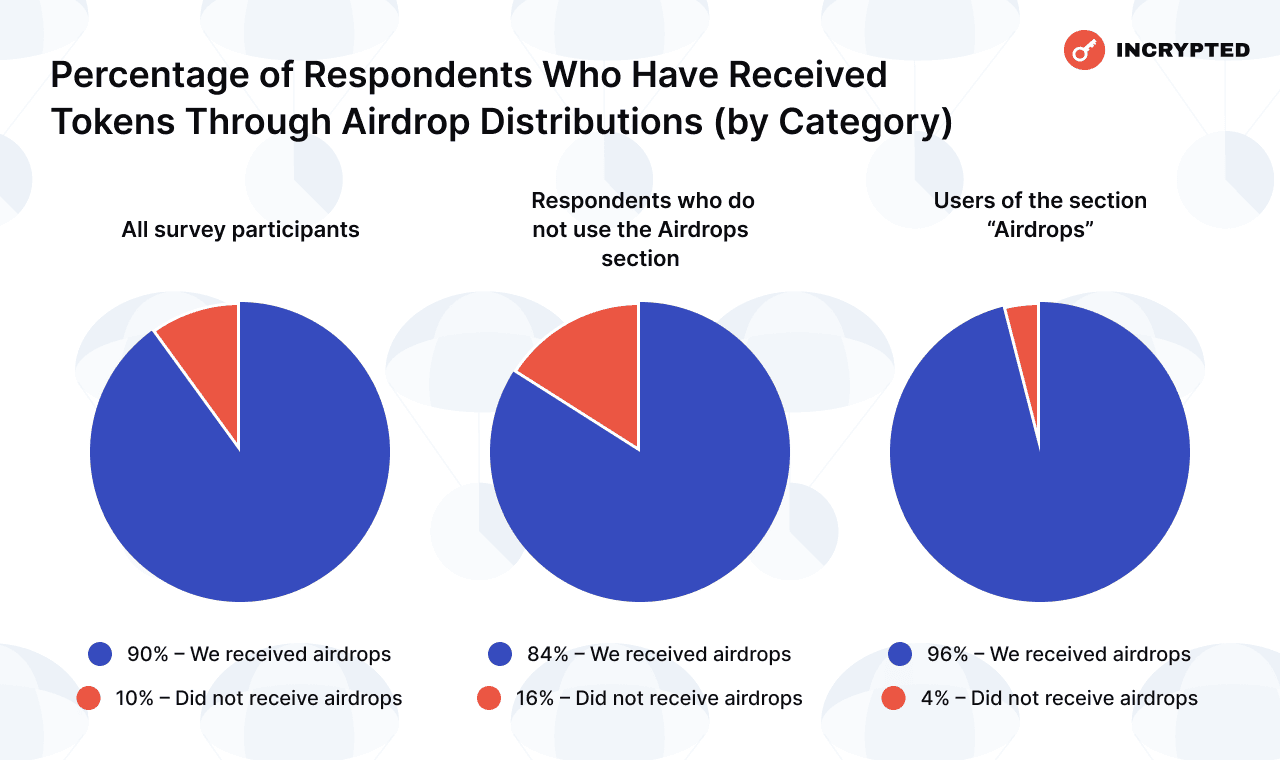
For most respondents, airdrops are not the primary source of income — only 18% answered the relevant question affirmatively. Meanwhile, 54% of “airdrop hunters” use Incrypted’s guides.
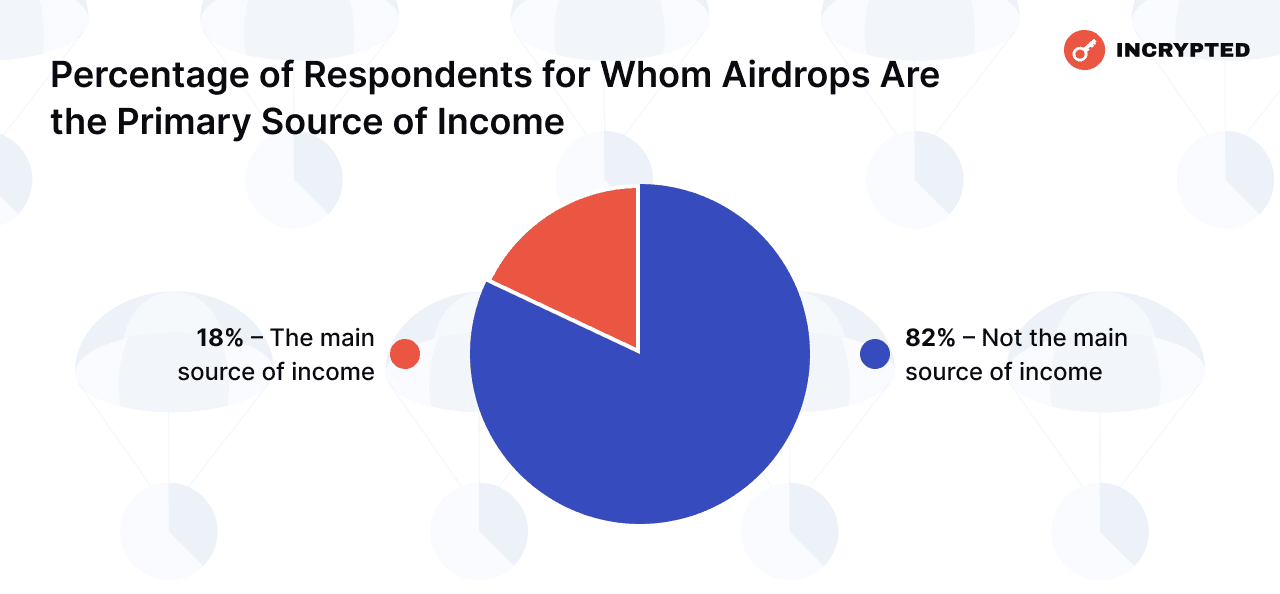
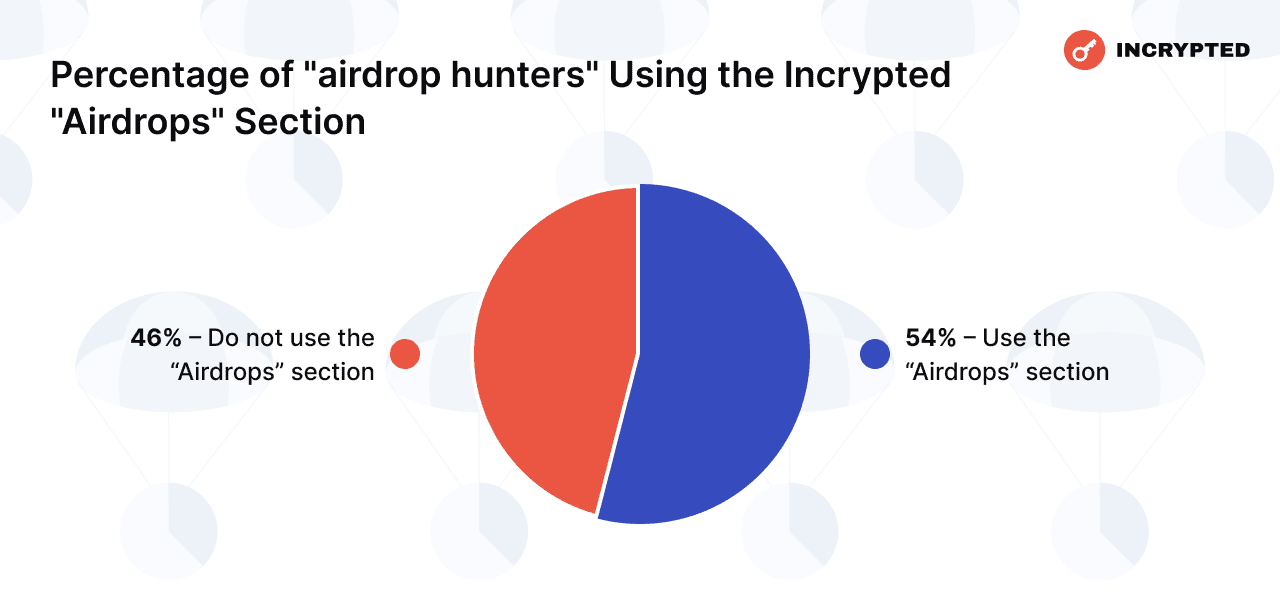
Respondents who intentionally farmed airdrops dominate the group that has received tokens through various distributions. It appears that many of them are active users of decentralized applications, as about 40% of participants indicated that they received tokens for activities they regularly engage in.
Among those who farmed airdrops deliberately, the majority (53%) practice some form of multi-accounting.
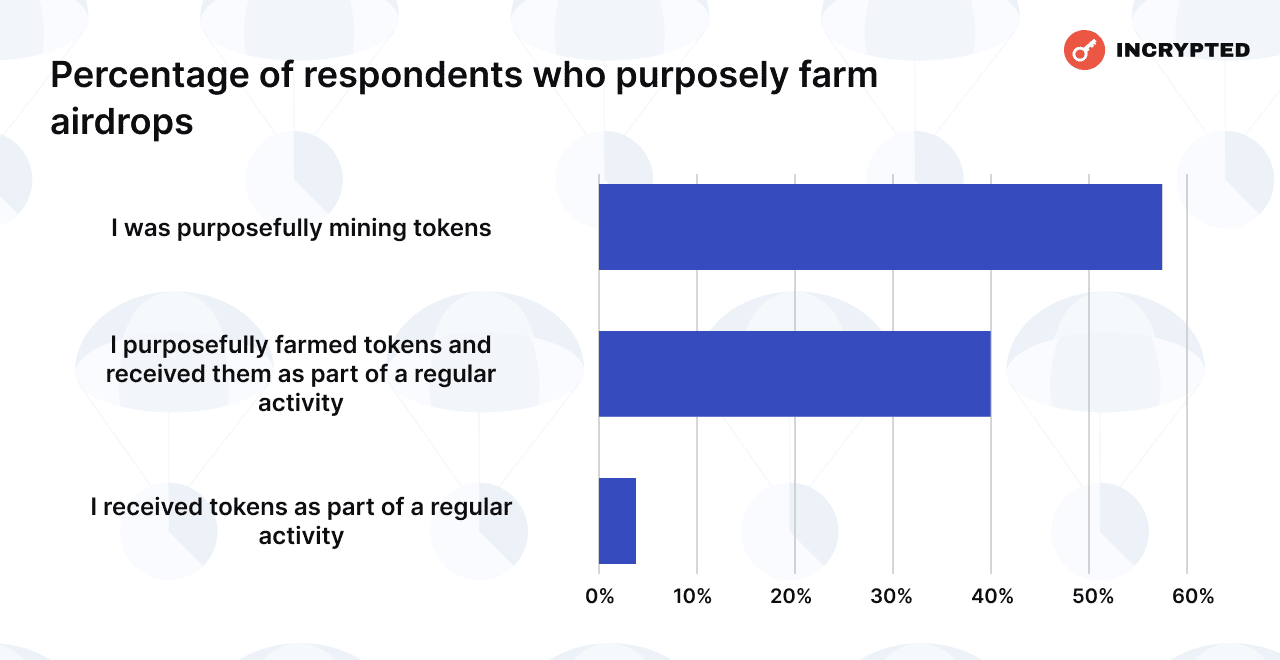
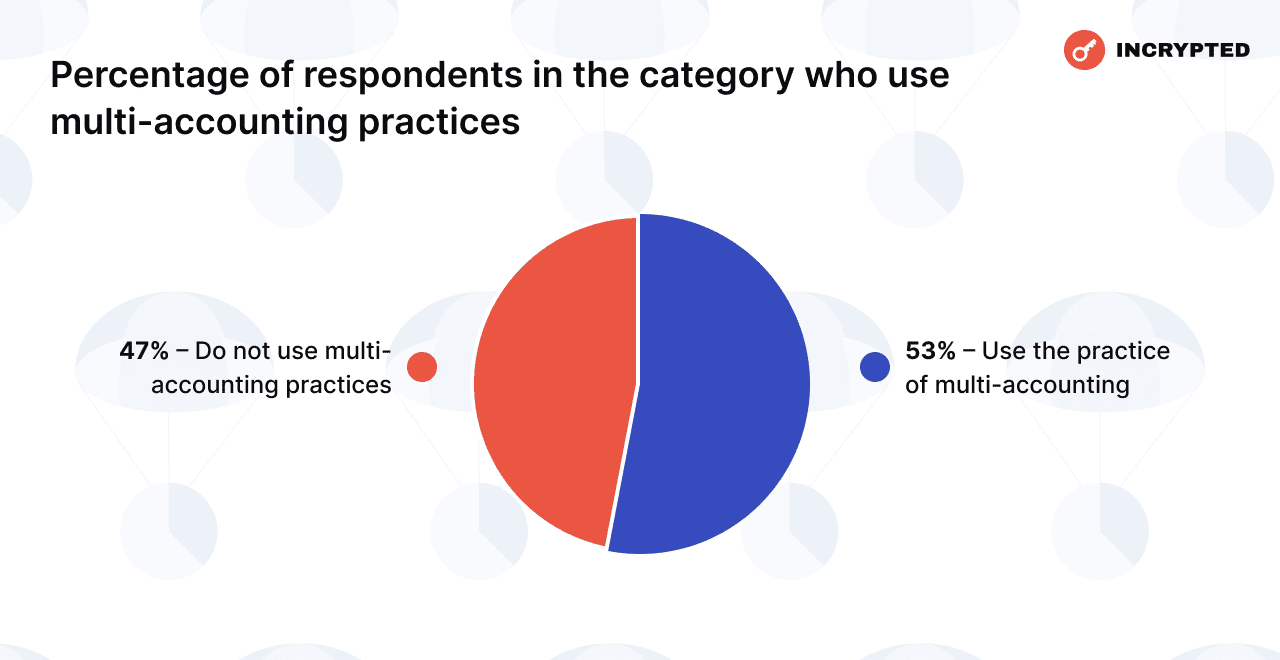
The initial capital of the majority (61%) of respondents intentionally farming airdrops was less than $500. Only 16% of the surveyed individuals had a starting deposit exceeding $3,000.
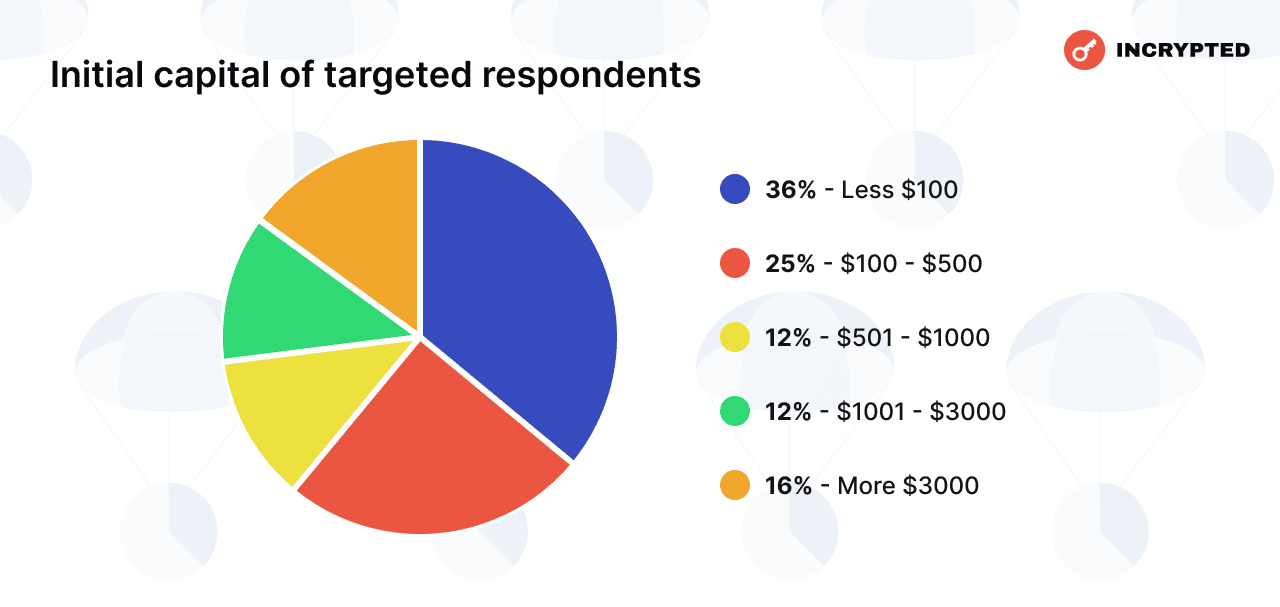
On average, respondents who intentionally farmed airdrops spent 2.4 hours daily on this activity. Among users in this category, 71% dedicated less than 3 hours a day to it.

For airdrop hunters, the average time spent was higher — 3.6 hours. In contrast, those who do not consider airdrops a primary source of income spent an average of 2 hours daily on this activity.
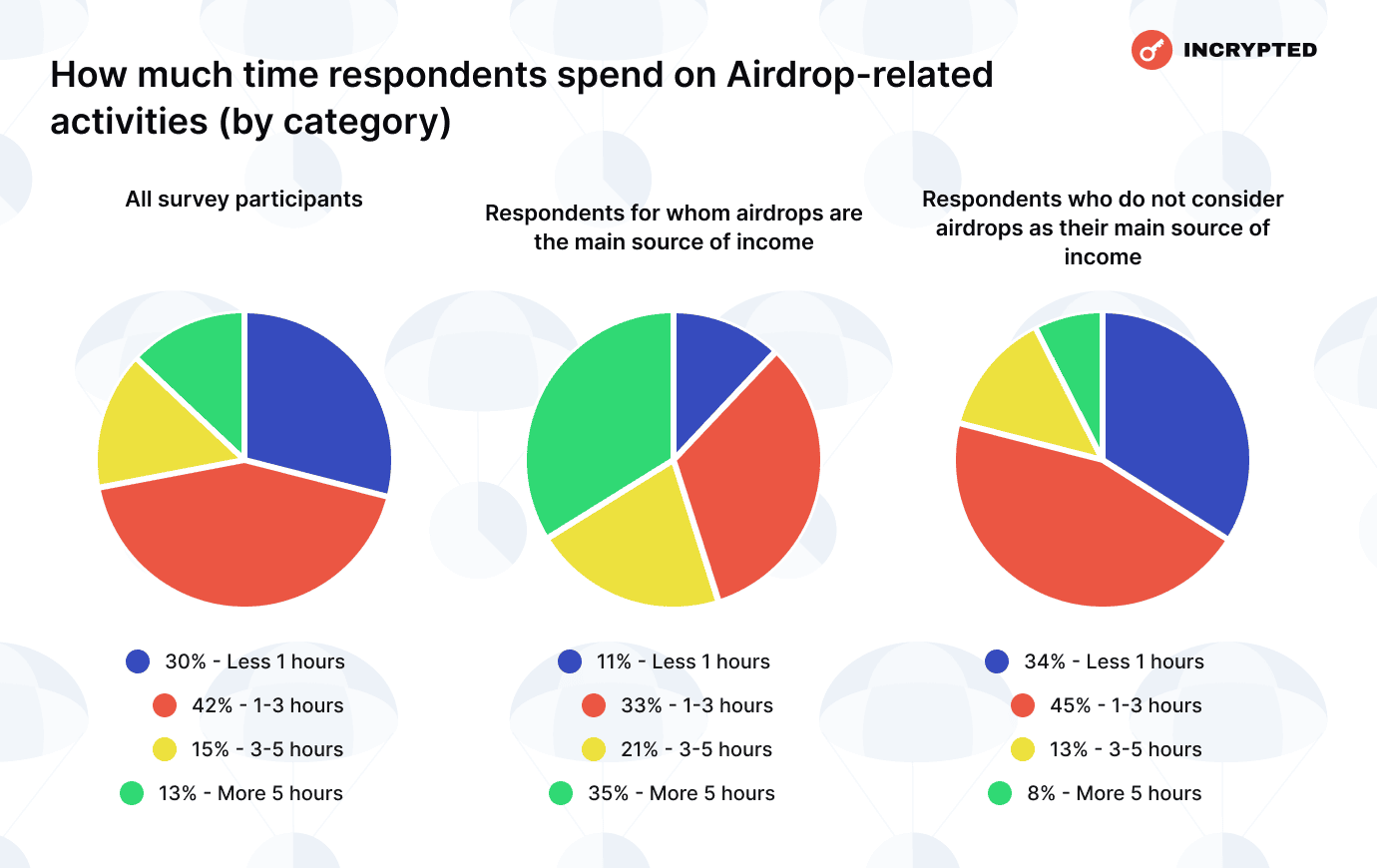
Incrypted readers actively engaged with various industry projects to qualify for token distributions. Only 39% of respondents noted that they participated in ten or fewer airdrop campaigns. Meanwhile, 15% of users reported farming more than 50 projects.
For respondents who consider airdrops their primary source of income, the figures were somewhat different: the percentage of users participating in 25 or more campaigns was significantly higher.
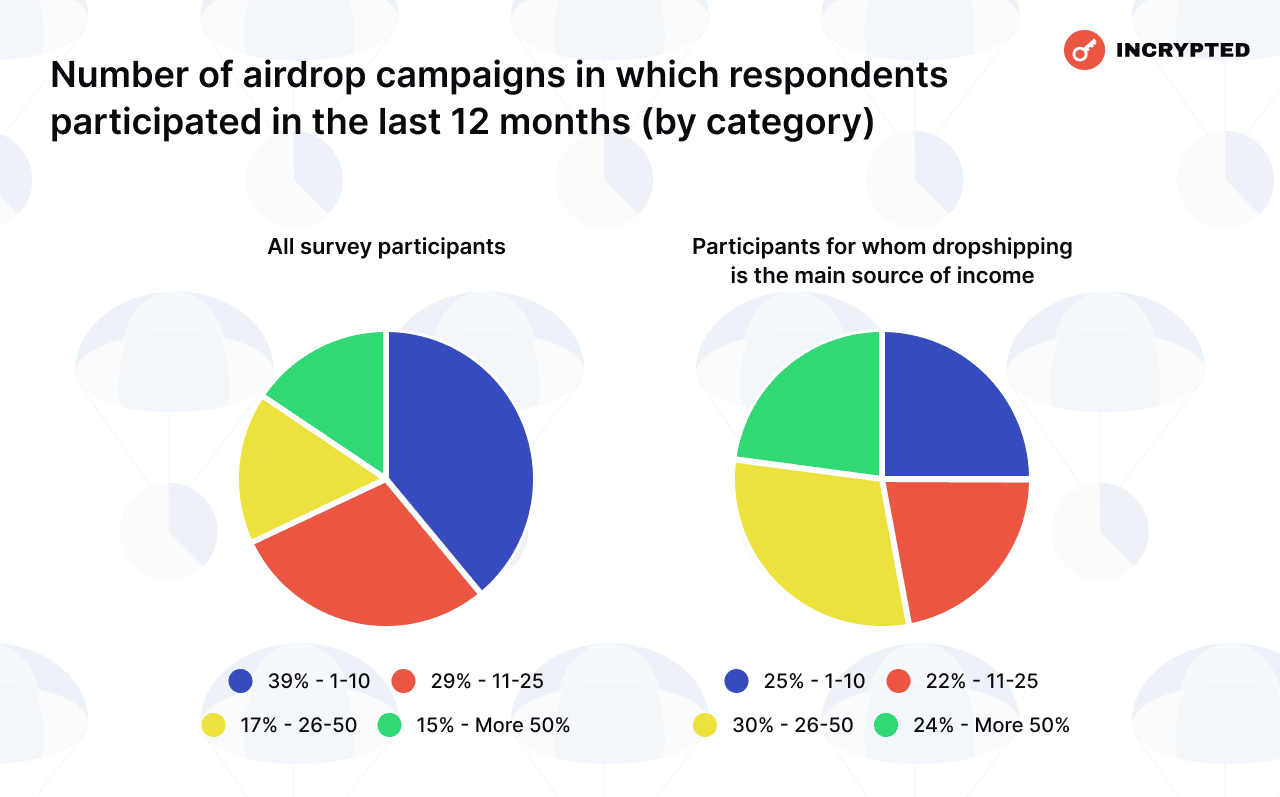
On average, users reported that 30% of the campaigns were successful. 41% of respondents achieved success in more than a quarter of the cases. Only 5% of participants stated that all airdrop campaigns were unproductive.
We considered a campaign successful if the user actively participated in related activities and received a token allocation as a result.
Among users for whom airdrops are the primary source of income, the average success rate was 41%. Additionally, 58% of respondents in this category achieved success in more than a quarter of their campaigns, and there were no respondents who deemed all airdrop campaigns unproductive.
In this group, a significantly higher number of users reported successful outcomes in over 75% of campaigns — 19% compared to 9% in the previous category.
We also identified a group of respondents who spent more than 5 hours a day on activities related to airdrops. On average, they reported that 35% of campaigns were successful.

For the majority of respondents (53%), the maximum size of a single airdrop they have ever received did not exceed $1,000. However, a significant group of users (19%) reported receiving more than $5,000 in a single distribution. Additionally, there were participants who earned over $300,000 from one airdrop.
The average value across all respondents was $7,927.
Looking at the statistics for the past 12 months, similar trends are observed. The average value during this period was $7,358.
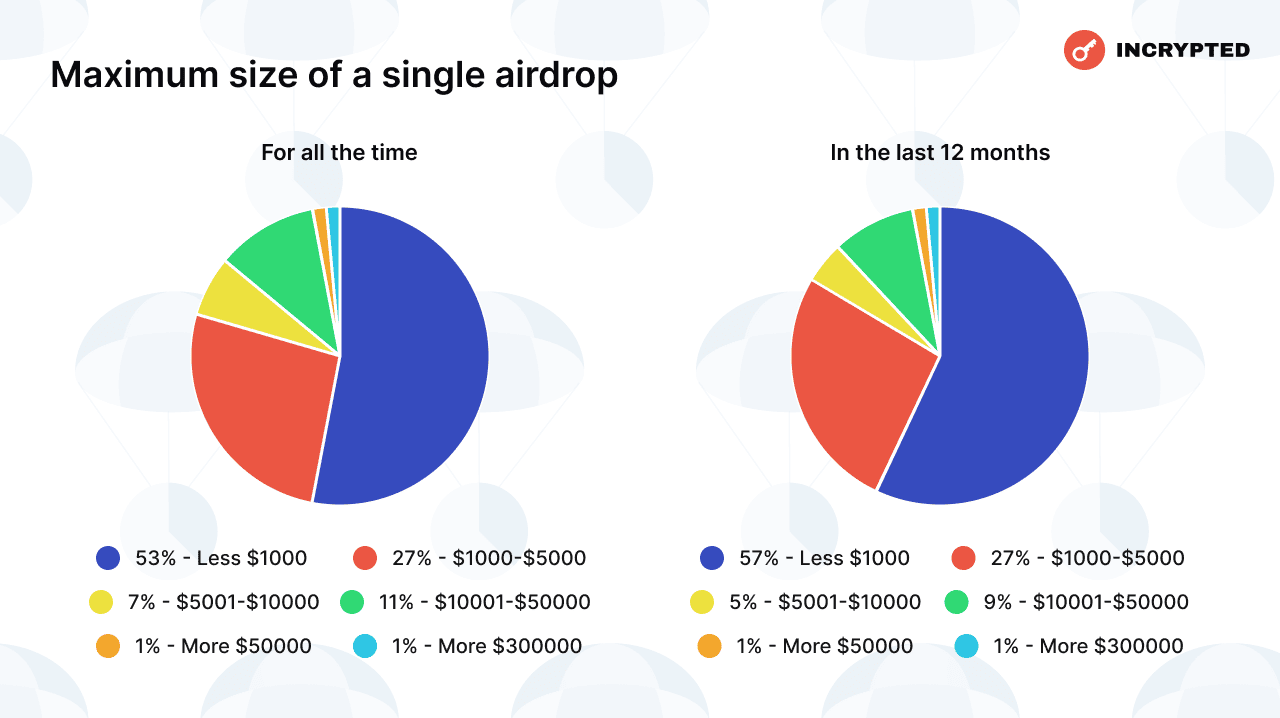
Over the past 12 months, the average respondent earned $8,460 from airdrops. For 41% of respondents, this figure falls within the range of $1,000 to $15,000, while 15% reported earnings between $15,001 and $50,000. Some participants stated that their income exceeded $100,000.
For comparison, according to Work.ua, the average salary in Kyiv at the beginning of September 2024 was ₴300,000 per year, which is approximately $7,296 based on the exchange rate at the time of this report’s preparation
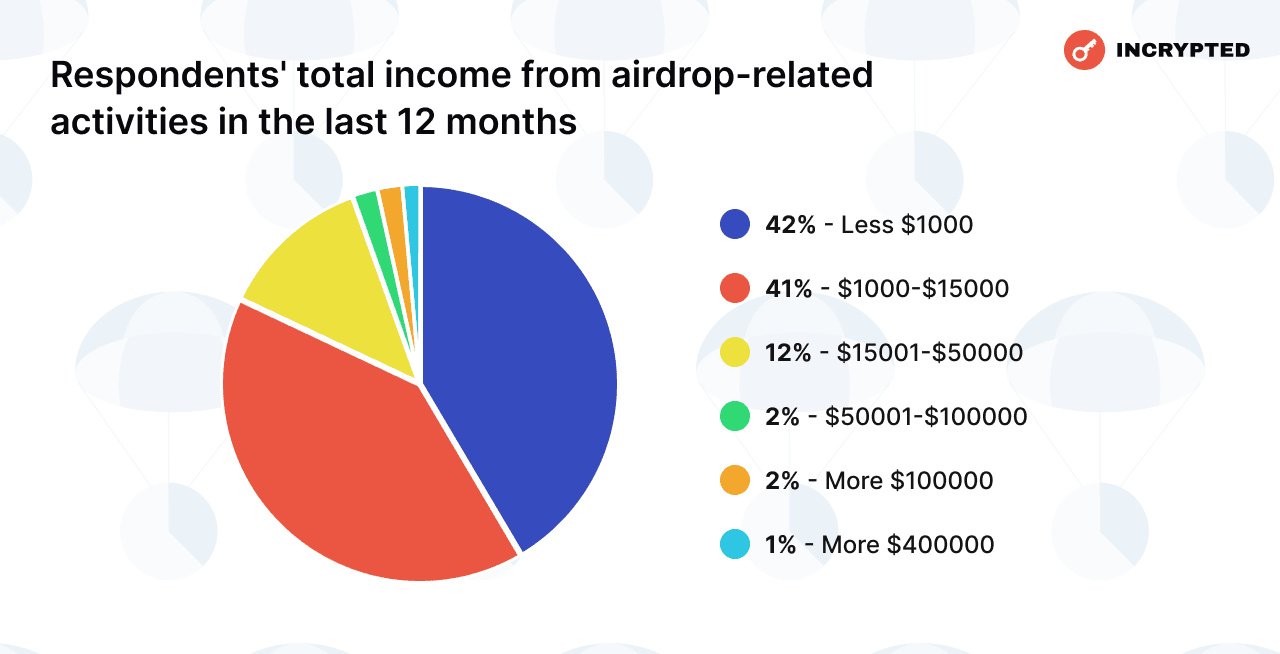
During the “hunt” for airdrops, users incur certain operational expenses, particularly for covering transaction fees. Over the past 12 months, 74% of respondents spent less than $1,000 on relevant activities, while only 3% had expenses exceeding $12,000. The average expense in this regard was $1,707.
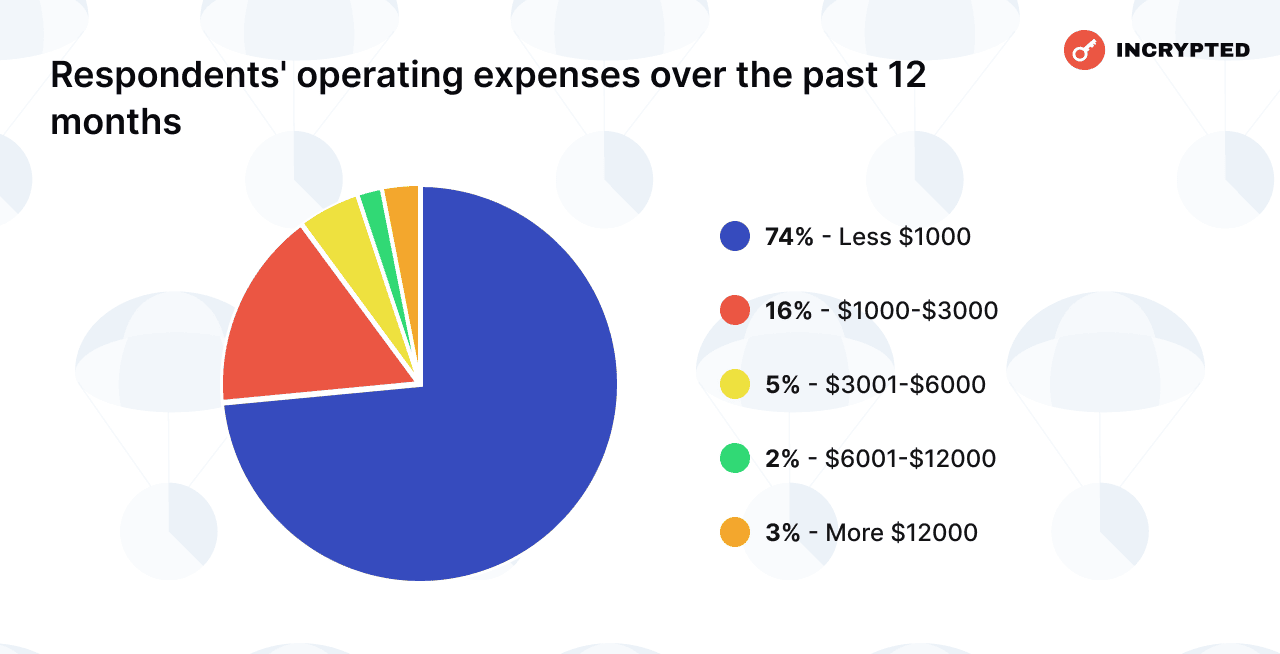
There is a clear correlation between the time respondents dedicated to airdrop-related activities and their earnings.
For instance, among survey participants who spent more than 5 hours a day on this activity, there was the lowest percentage of users who earned less than $1,000 over the past 12 months, as well as the highest percentage of participants who earned over $50,000 during the same period.

A similar dependency was observed concerning investments— the more money respondents invested in airdrops, the higher their average earnings tended to be. For example, among those who spent less than $1,000 on airdrops over the past 12 months, there were virtually no respondents who reported earnings exceeding $15,000 during that time
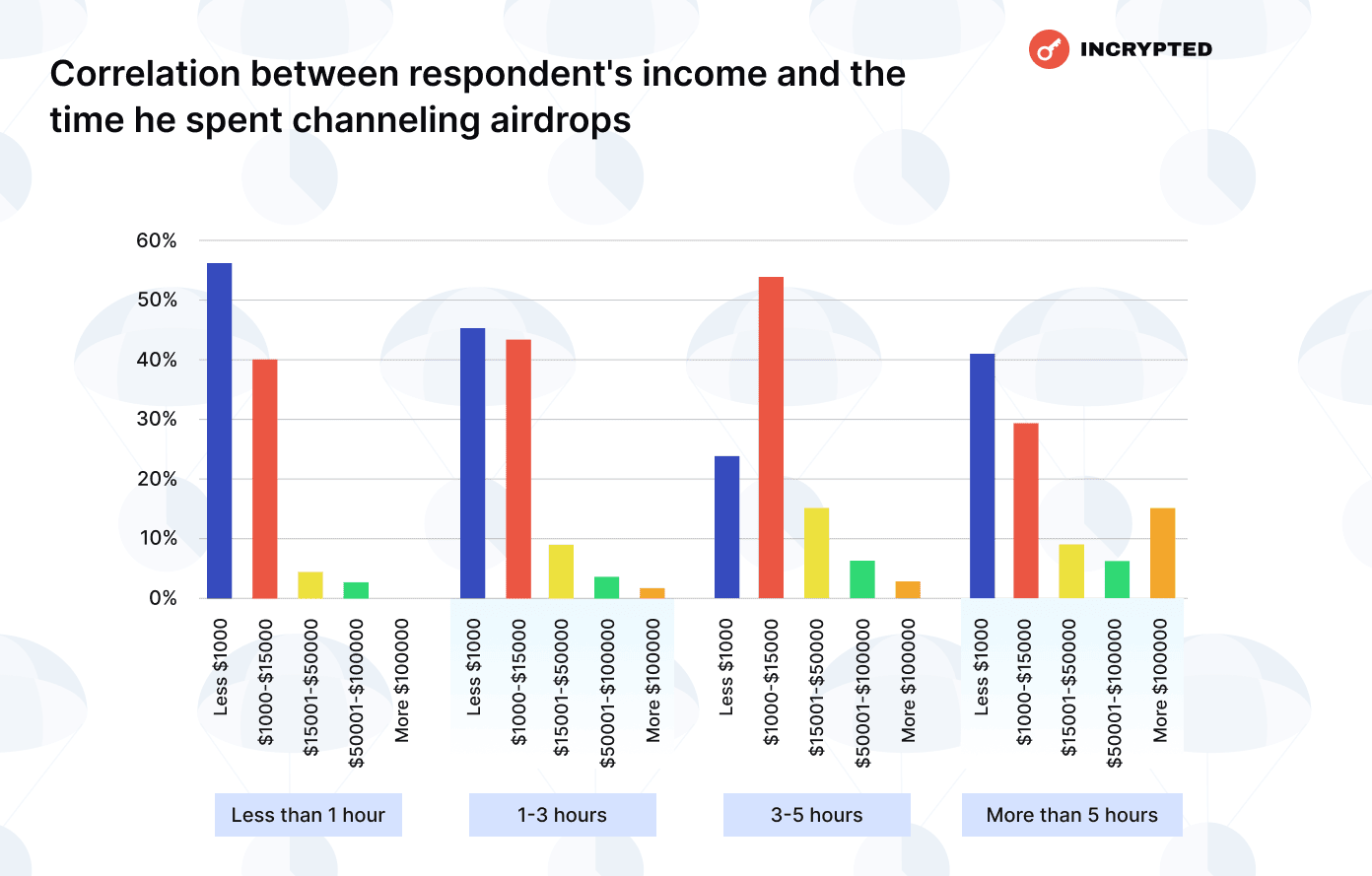
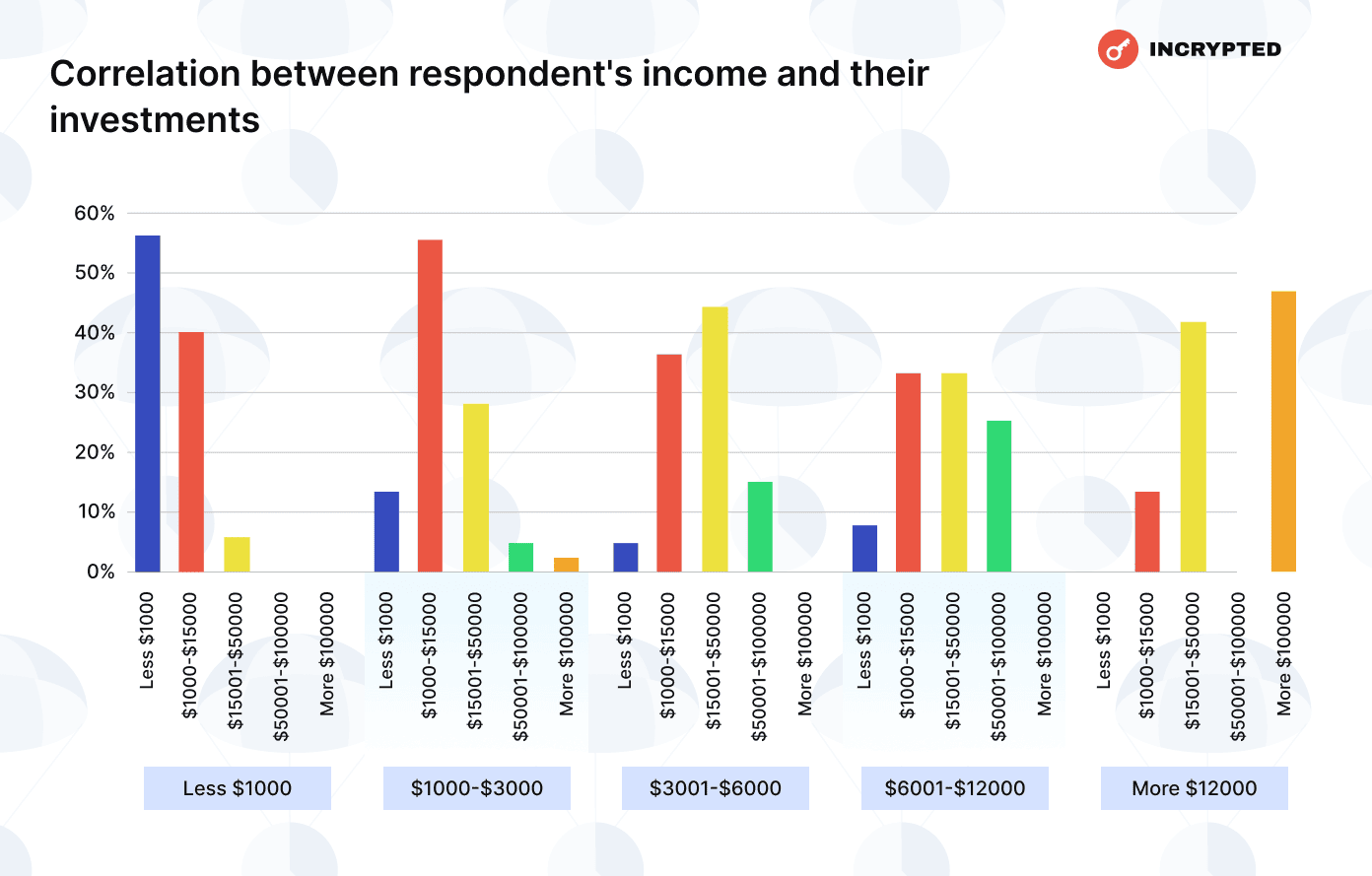
75% of respondents who intentionally farmed airdrops reported that their activities were profitable over the past 12 months. Only 12% of respondents from this category indicated that they incurred losses, while the rest broke even.
In contrast, 60% of all surveyed users believe that the direction is profitable, with only 8% of them labeling the “hunt” for airdrops as a loss-making endeavor.
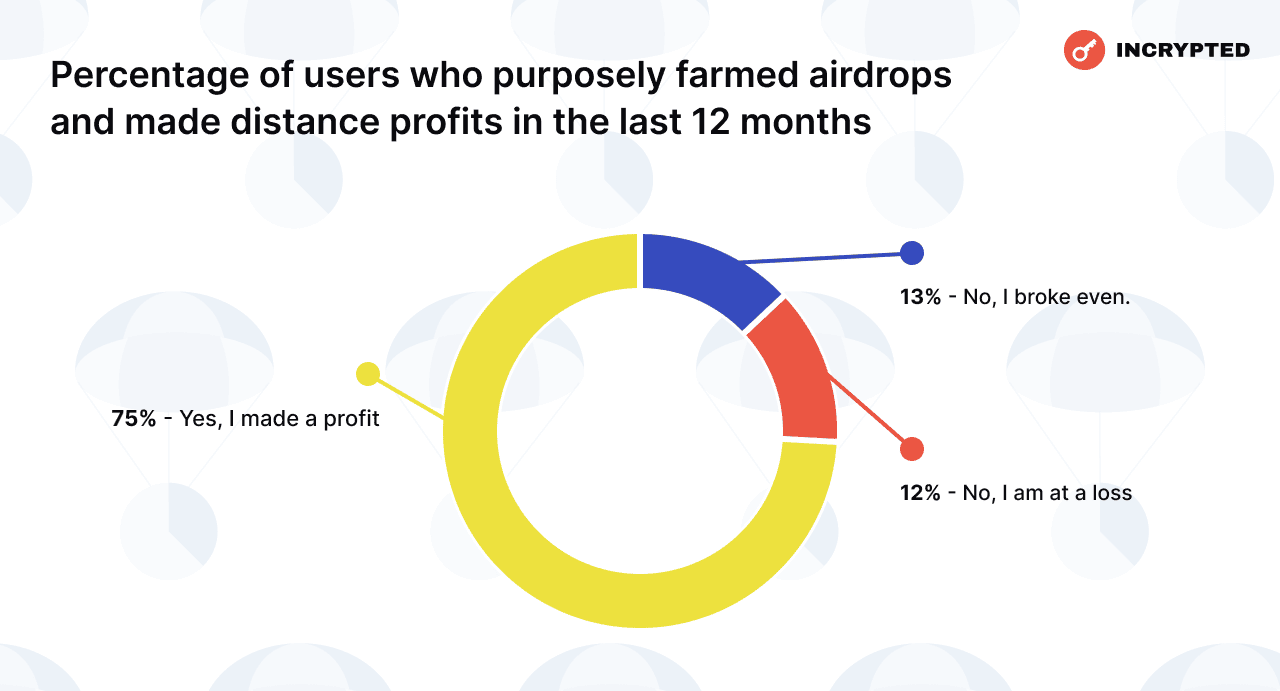

Respondents who intentionally farmed airdrops actively engaged with Ethereum (61%), ZKsync (53%), Base (49%), and Solana (48%). The least popular networks were Avalanche (9%), Cosmos (20%), and Near (25%).
Regarding the networks where respondents received airdrops, the following picture emerged:
- Ethereum was the most “productive” blockchain, with 52% of respondents receiving allocations here.
- Solana came in second with 35%.
- The third position was held by a group of networks not included in the list provided by the Incrypted team (32%).
- Binance Smart Chain ranked fourth with 27%.
The least “productive” blockchains were Avalanche (2%), Linea (5%), and Optimism (7%).
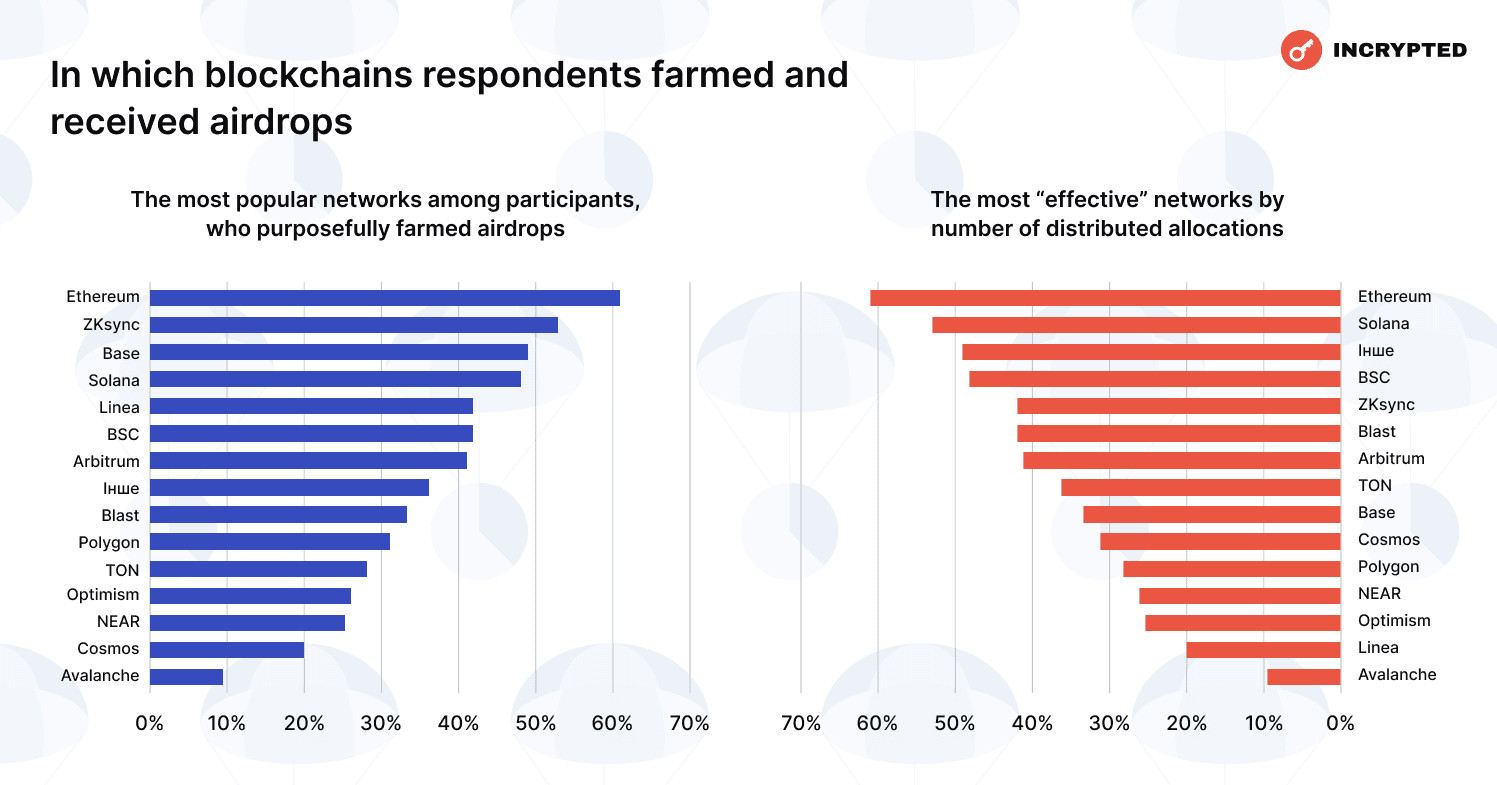
In terms of specific activities, the most popular types among respondents were various actions in testnets (71%), participation in quests (64%), and staking (58%).
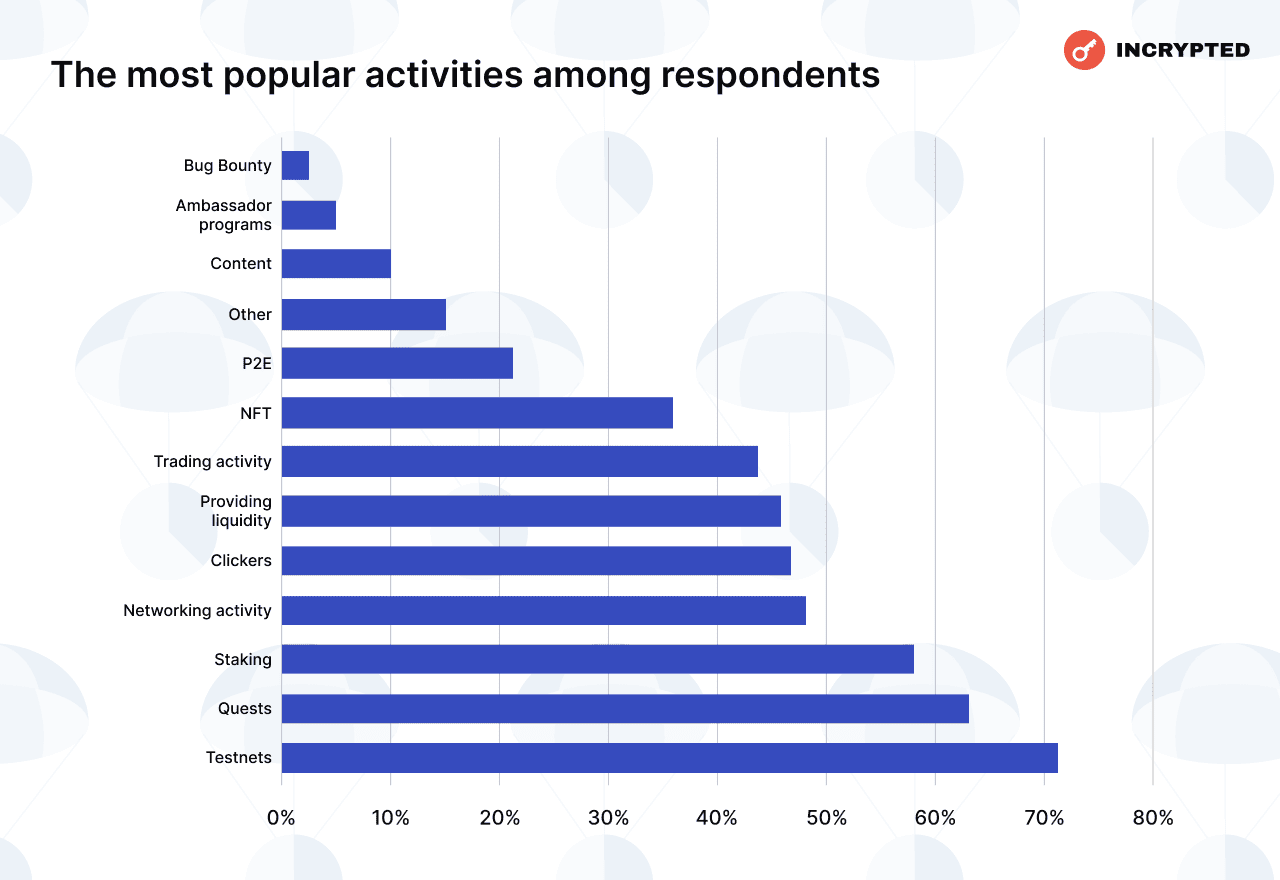
We also identified two distinct user categories: the first includes respondents for whom airdrops are the primary source of income, while the second consists of those who earned over $15,000 from this activity in the past 12 months.
In the first group, the same activities were predominant. However, it is noteworthy that these respondents paid more attention than average to operations related to providing liquidity and trading.
In the second group, the predominant activities were staking (75%), providing liquidity (75%), and participating in testnets (73%).
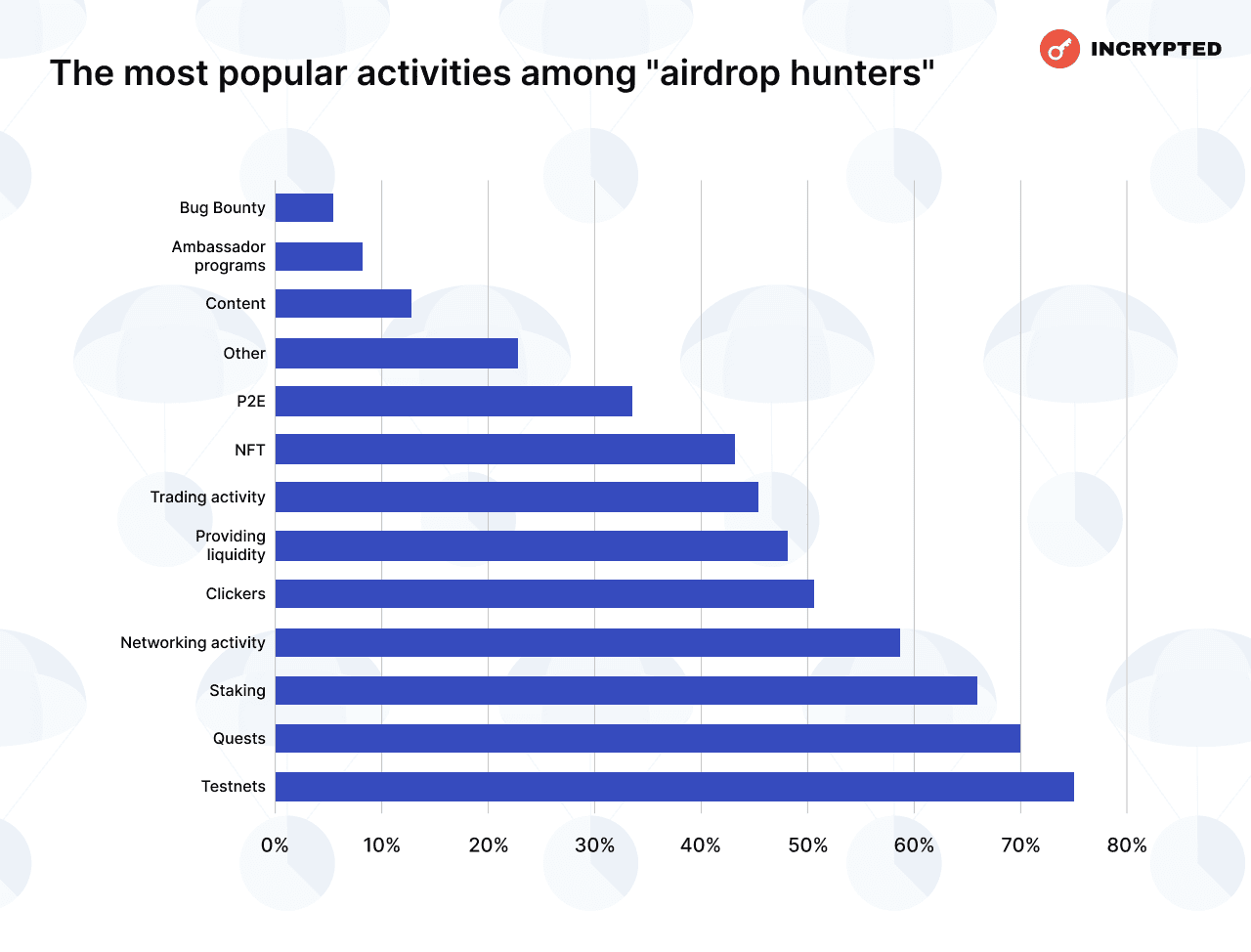
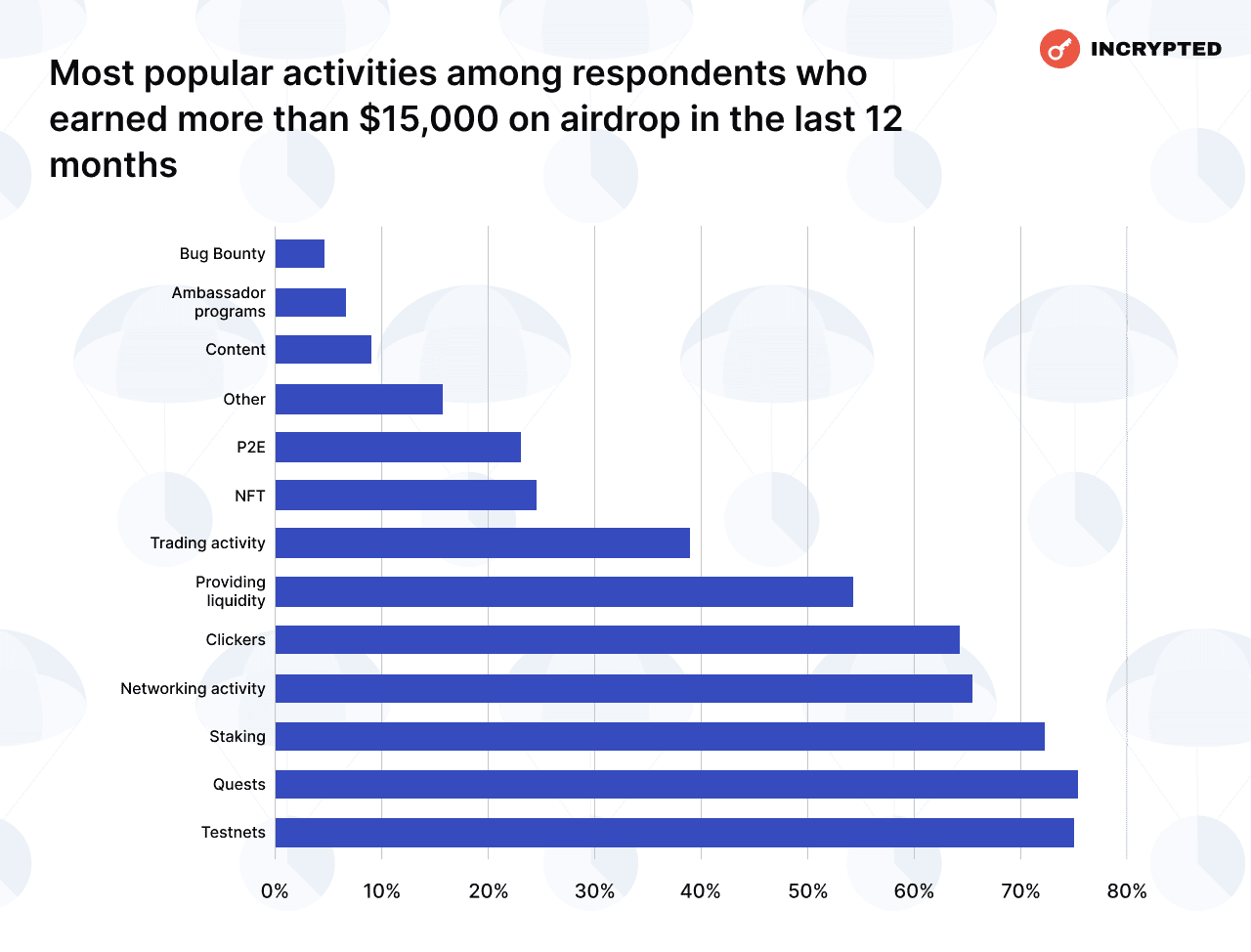
After receiving an airdrop, users generally have two options: sell the tokens or hold onto them. The latter includes activities related to staking and interacting with DeFi applications.
Only 12% of respondents stated that they hold tokens for an extended period. 23% noted that they sell their assets immediately after receiving the airdrop. 31% of respondents indicated that they sell only a portion of the tokens while keeping the rest. 34% mentioned that their actions depend on the market situation.
Interestingly, among respondents who earned over $15,000 from airdrops in the past 12 months, the percentage of users who sell tokens immediately after receiving their allocation was significantly higher—41% compared to 23% in the overall group.
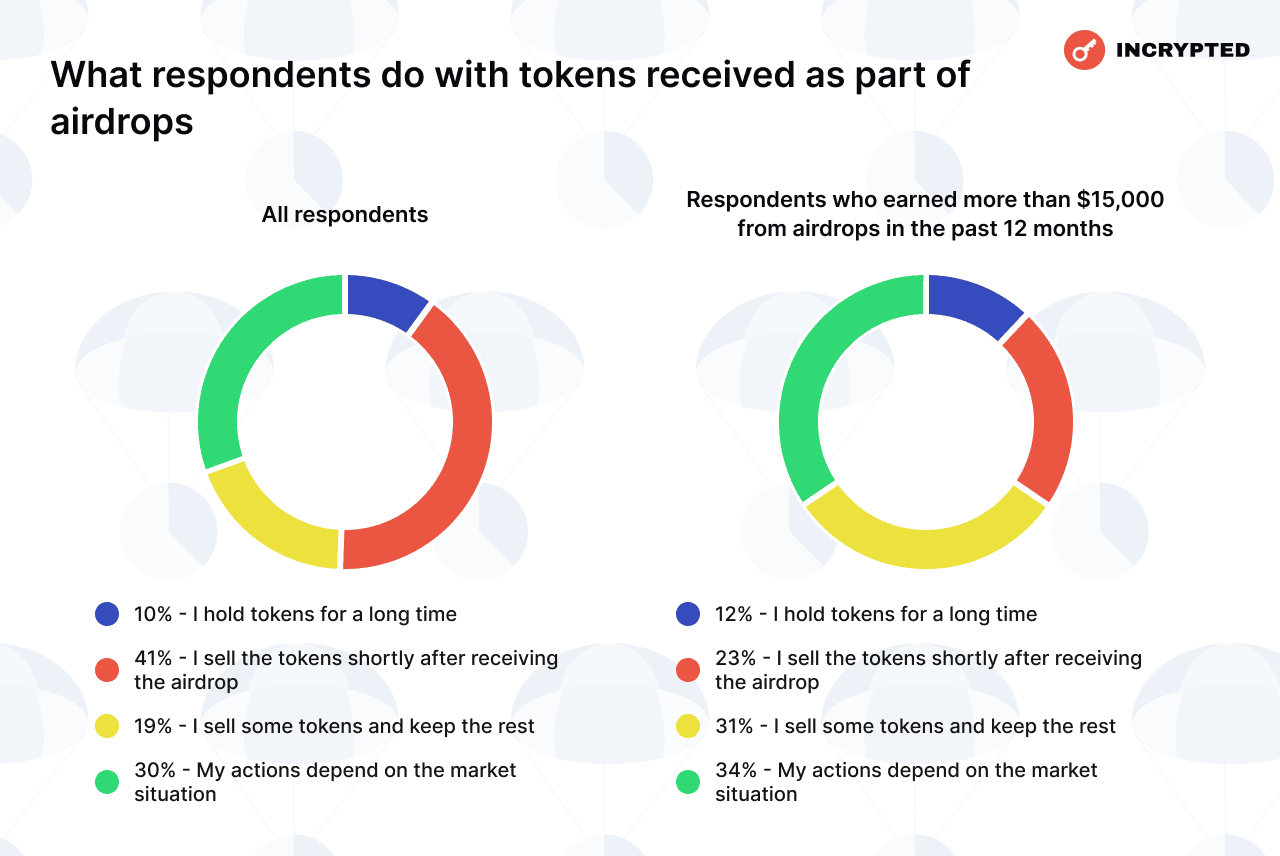
Half of the respondents who intentionally farm airdrops rely on guides from Incrypted when choosing a project. Additionally, respondents often consider the frequency of the product’s mention within the community (58%) and draw conclusions based on their own research (43%).

In Conclusion
Some community members wonder whether the concept of airdrops might “die out,” giving way to more efficient and equitable mechanisms for token distribution. We’ve already shared our thoughts on these concerns, and in short—most of these fears are unfounded. Airdrops have proven their effectiveness over time and continue to evolve, remaining a dominant tool for community engagement and token allocation.
Readers of Incrypted also believe that projects will continue to use this model, with 79% of respondents agreeing with this view. Additionally, 65% of users think that the mechanism will evolve significantly, while 14% of respondents believe it will not undergo major changes.
Only 6% of respondents stated that the concept of airdrops will “die out.”
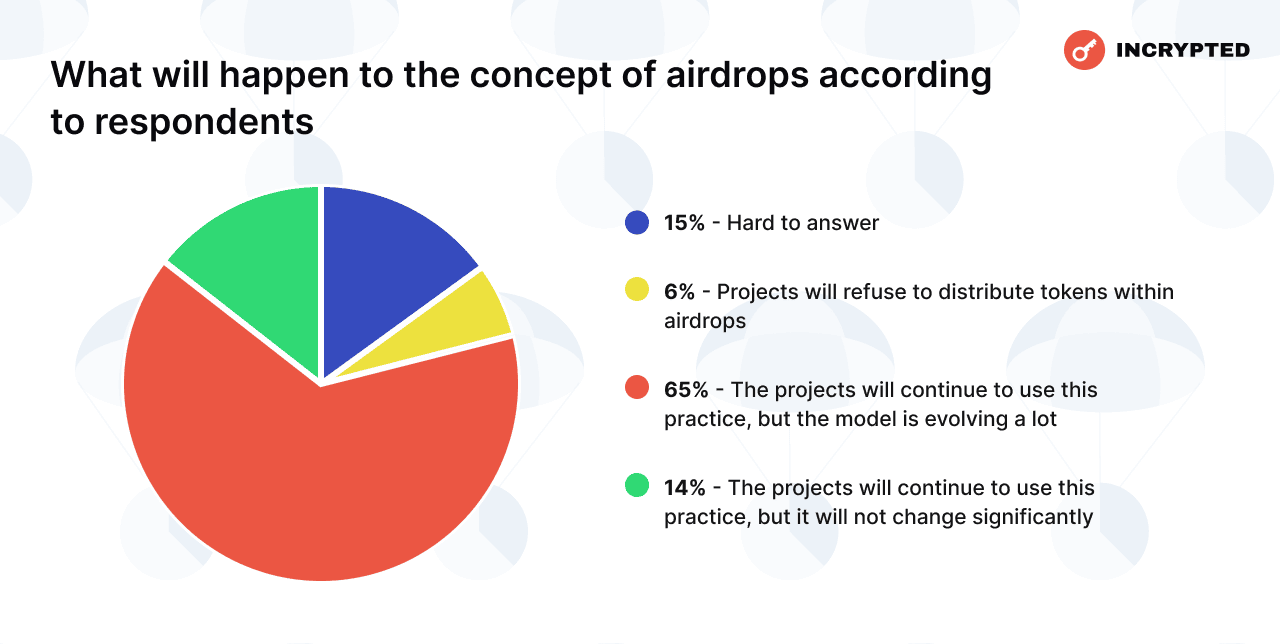
The majority of respondents believe in the direction of airdrops and consider them a profitable niche. Moreover, users emphasize the need for an airdrop-focused community—this was stated by over 80% of the readers we surveyed.
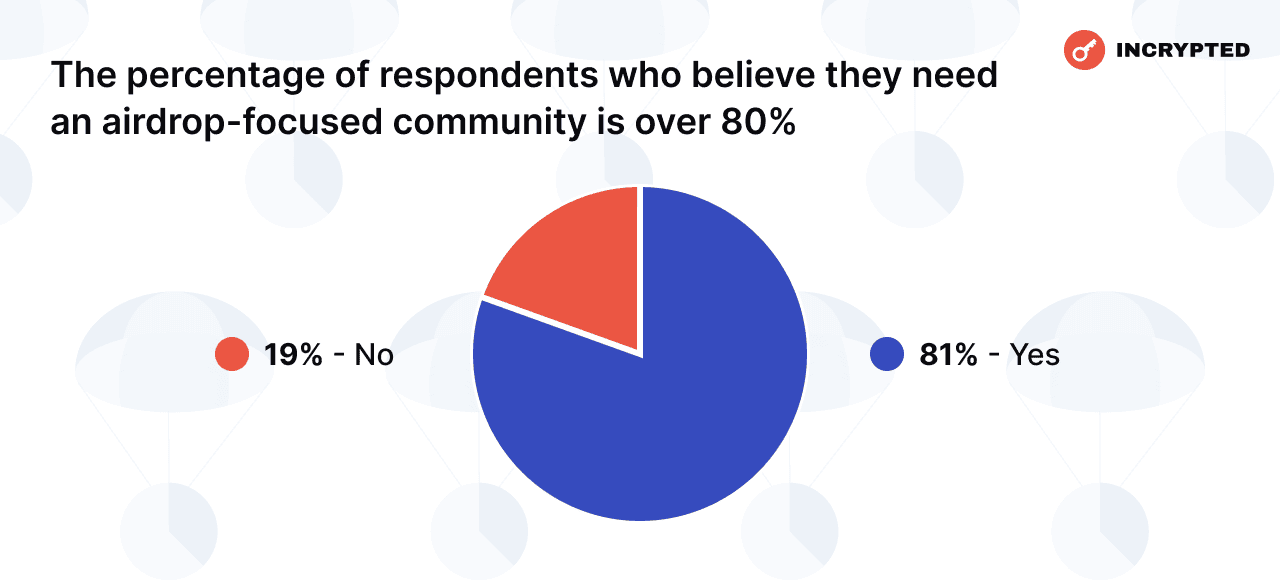
Therefore, it can be confidently stated that the “hunt” for airdrops remains a relevant activity in the cryptocurrency market, suitable for both newcomers and experienced users. Projects will continue to distribute tokens for marketing purposes, which means market participants will keep earning from this.
To enhance your effectiveness, you can utilize guides from the Incrypted portal as well as recommendations from our Telegram channel. For those who wish to connect with like-minded individuals, we have opened a dedicated chat.
The Incrypted survey involved over 800 participants. However, we excluded respondents who provided knowingly false answers, particularly those who contradicted themselves during the survey.
For example, if a user answered “No” to the question “Have you ever received tokens through an airdrop distribution?” but then indicated that they earned between $1,000 and $15,000 from airdrops in the past year, they were excluded from the final statistics.
In some cases, we assessed average figures based on range values. This approach simplified the collection and processing of data from users.
The report contains information about the earnings of various user groups. Please remember that the figures presented reflect past performance and do not guarantee future results.
This material is provided for informational purposes only and does not constitute financial advice. The Incrypted team is not responsible for the investment decisions of readers.




